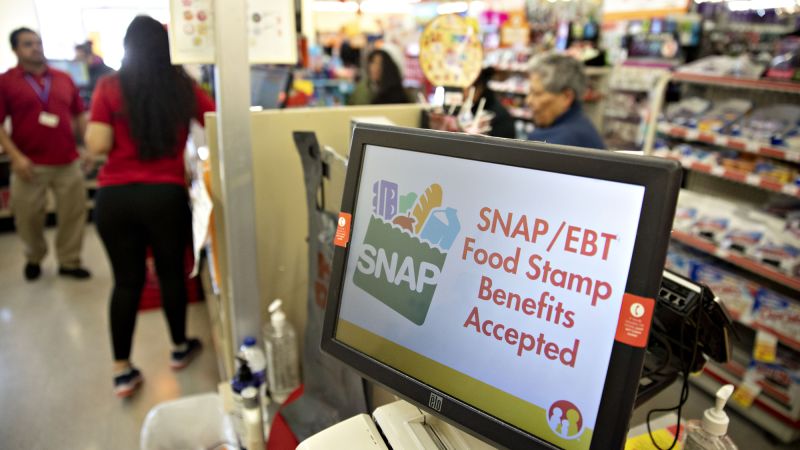Recent legislative developments in the United States have sparked significant concern among low-income Americans, particularly families with children, regarding proposed cuts to vital social safety net programs. A newly passed tax and spending package by House Republicans threatens to strip millions of individuals from receiving food stamp benefits—formally known as the Supplemental Nutrition Assistance Program (SNAP)—as highlighted by a Congressional Budget Office (CBO) analysis published on a Thursday in October 2023.
The review elucidates a stark reality: the measures included in this financial package, designed to align with a larger agenda believed to be championed by former President Donald Trump, aim to implement profound fiscal changes. While the bill proposes substantial tax reductions, projected to cost trillions, it simultaneously suggests significant slashes in federal assistance for food stamps and Medicaid to mitigate these expenditures. As anticipated, the proposal will undergo revisions in the Senate, where lawmakers have voiced trepidations concerning the implications for the most vulnerable populations.
As articulated in the CBO analysis, the proposed legislation plans to diminish funding for SNAP by approximately $286 billion over the next ten years. This drastic reduction would affect the livelihoods of about 42 million Americans dependent on this federal assistance. Notably, the analysis was requested by key figures such as Sen. Amy Klobuchar and Rep. Angie Craig, who serve as ranking members of the Senate and House agriculture committees. The Republicans’ justification for these measures is rooted in an intent to “restore integrity” to a program that has long provided critical support to struggling families.
Among the most contentious components of this legislative package is a mandate expanding existing work requirements for food stamp recipients. For the first time, these requirements would also apply to many parents and older adults, alongside imposing stricter rules for states in waiving these mandates during economic downturns. Such adjustments could disqualify approximately 3.2 million individuals from receiving SNAP benefits on average each month over the next decade—an alarming statistic that includes 800,000 individuals living in households with children aged 7 and older.
Furthermore, under this new plan, states would face new financial burdens, being required to contribute to the cost of food benefits for the first time. Depending on their rate of payment errors, states could be obliged to cover 5% to 25% of these costs. This financial pressure may lead various states to reevaluate their involvement in the SNAP program entirely, with adjustments to benefits or eligibility potentially causing assistance to be cut for roughly 1.3 million individuals in a given month, as estimated by the CBO.
In addition to the direct cuts to food stamp benefits, other related assistance programs are equally at risk. For instance, child nutrition subsidies may witness a diminishment affecting approximately 420,000 children. The legislation also proposes caps on annual increases in benefits, which would further dilute what monthly assistance recipients currently receive. Furthermore, tightening rules on noncitizen eligibility could potentially leave between 120,000 and 250,000 individuals without support.
The implications of these proposed changes are deeply alarming. The CBO has indicated that the loss of coverage projections pertains to individual provisions without accounting for overlaps, meaning the total number of affected individuals could be even more significant. To complicate matters, the House bill also paves the way for the introduction of work requirements to Medicaid for the first time, which may displace millions of low-income Americans from their essential health coverage, compounding the precariousness of their financial and health security.
As discussions around these provisions continue on Capitol Hill, the future of low-income families and their access to essential social support systems remains increasingly uncertain. With various stakeholders poised to react and advocate for changes, the journey ahead will be crucial in determining the consequences of this significant legislative initiative on Americans’ fundamental well-being.



